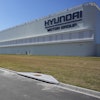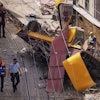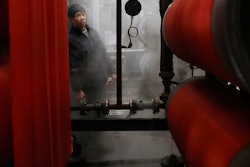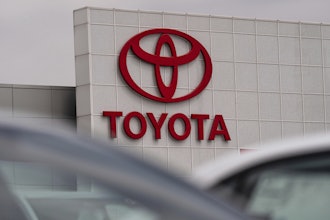Industrial inspections, regardless of the reason for inspection, can be a very dirty and dangerous job. While not necessarily dull, industrial inspections definitely cover two of the three D’s (dull, dirty, and dangerous) of robotics deployment. Industrial inspections can range from inspecting operational assets and operational facilities to inspecting defunct facilities during the de-commissioning process or evaluating the health and risk of non-operational holding tanks. There is no shortage of reasons to conduct industrial inspections, and there is a big business emerging for robotics to be leveraged in the inspection process.
Industrial inspections often occur in risky areas of a facility, where significant health and safety equipment is required to reduce the risk of injury to human workers. For example, inspecting a non-operational holding tank that had been used to store hazardous waste might traditionally require a well-equipped team of human operators to physically enter the space, capture samples of any remaining material in the tank and visually inspect the interior walls and elements of the tank for signs of corrosion or depredation. Imagine that this tank still contains some level of hazardous material that might require limited exposure within the tank, meaning people have a short amount of time where they can be exposed before having to exit the tank and another person would enter and pick up the work. This is a very real example of an industrial inspection that is dirty and dangerous, where robotics are helping to reduce the risk to human workers and accelerate the inspection process.
In such an inspection, there may need to be air quality samples taken, liquid samples, material samples from walls, and visual inspection conducted. So, how exactly can robotics tackle this problem? Well, there are robotics vendors that have developed applications designed to enter such areas, remotely operated by a human (right outside of the tank) and take the human out of the risky environment. Really, these mobile robots have become mobile sensor platforms, equipped with the ability to capture samples, sense the air, and record video of the visual inspection. Not to mention, the artificial intelligence that can be equipped on the robot itself and within the robot operating software that can accelerate the process of understanding the conditions or the ability to identify points of risk in the visual inspection that might be too small to detect with the human eye.
Another example of an industrial inspection is inspecting HVAC or other duct work within an operational or non-operational site. These, often routine, inspections may require multiple people who access duct work in short increments due to limited ability to safely move long distances within the duct work or limitations in any sort of tethered inspection device, such as a snaking video camera. Also, keep in mind the difficulty in accessing such areas, duct work in an industrial facility is not going to be located within arm's reach, it may be dozens of feet in the air running along the roof. Again, there are multiple reasons for such inspections, but regardless of the reason, safely accessing these spaces and getting a human into the space is challenging.
Given the continued advancement in the field of robotics, there are several glaring reasons for industrial manufacturing organizations to consider the use of robots in their industrial inspection processes;
1. SAFETY of human workers is the top reason for engaging robotics in the industrial inspection process. Taking humans out of harm's way in the work place is good for the worker, as it reduces risk of injury, but can also greatly benefit the organization by keeping its most valuable asset safe (which can translate to reduced costs). Industrial inspections typically put human workers in harm’s way and often requires safety equipment designed to mitigate risk. Better than mitigating risk, is equipping human workers with technology that takes them out of the hazardous environment and allows them to conduct the inspection without risking physical harm.
2. Reducing the TIME it takes to conduct industrial inspections is another key benefit. Industrial inspection robotics are enabling organizations to both use less humans in the inspection process (reducing man hours) and accelerate the process of conducting industrial inspections. Working in hazardous environments usually requires multiple people, with robotics the number of people required to complete the task goes down allowing the reallocation of human labor to other aspects of the job. Also, using robotics can reduce the amount of changes required during the process. Examples include change outs of people in hazardous environments, eliminating the need for multiple access points (to a degree), and allowing for, in some cases, real-time analysis of information about the environment that would have previously taken additional time.
3. Improved ANALYTICS is another aspect where robotics deliver improvements to the industrial inspection process. Industrial inspection robotics allow for an organization to create a digital alignment between the physical processes. There is a real possibility of capturing real-time information about the environment and conducting analytics while the inspection is underway where previously it would have required the capture of samples, sending samples to a lab, and conducting analytics off-site.
4. Industrial inspection robotics improves ACCESS to hard to reach areas. These robots are much lighter than and not nearly as large as human workers allowing them to get into places that humans cannot access or may be unsafe to access such as enclosed spaces or hazardous environments. Accessibility may be limited due to space constraints or safety risk, but regardless, using robotics to get into places that human workers cannot (or should not) greatly improves the ability to conduct industrial inspection.
5. Cost is also a key consideration. Industrial inspections can be quite expensive, especially in enclosed spaces where the safety requirements, equipment, and people involved can easily make inspections run $1000 per hour or more.
The process of conducting industrial inspections is a business process area that is ripe for disruption with the help of robotic technology. At this point in time, the process is not about automating the task, rather it is about improving the safety of workers and augmenting the workers allowing them to do "do more with less, faster". This technology is allowing smaller teams to conduct inspections faster, more reliably, and in a manner that is safer for the people involved in the process. Industrial inspections are often time consuming, costly, and dangerous tasks, what better scenario can there be for the use of robotics to deliver improved outcomes?
John Santagate is Research Director of Service Robots at IDC.






















